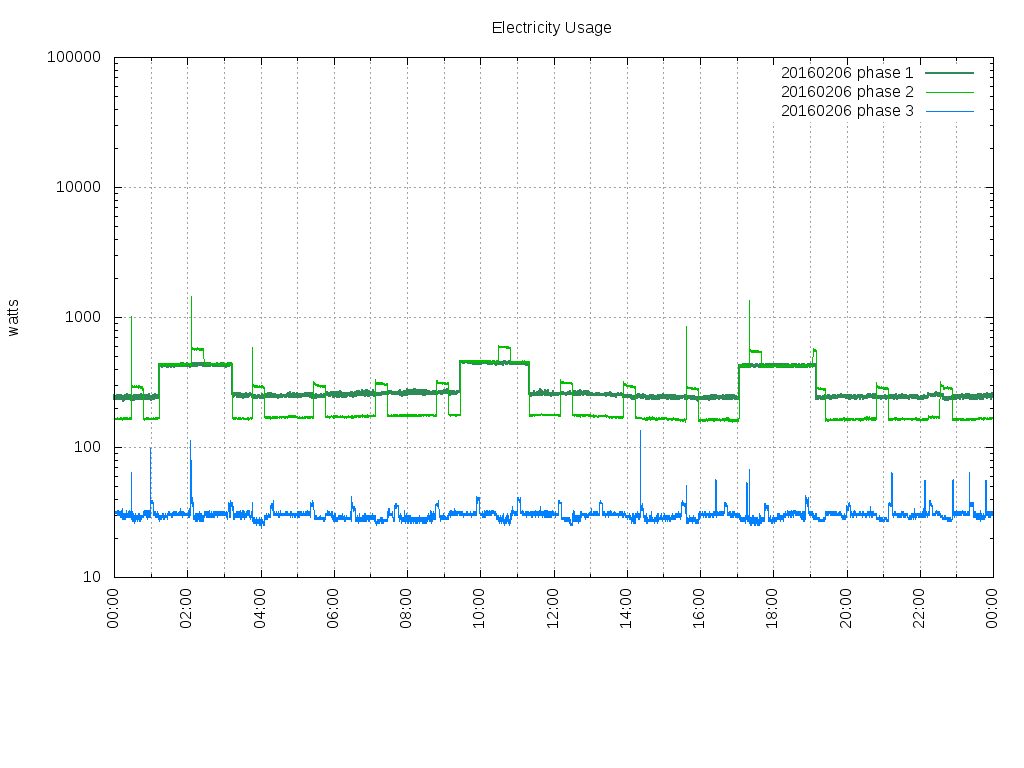Smart meters are available on demand for both gas and electricity, although there is a waiting list. We know they’ve had a lot of bad press, but in community venues, they are particularly useful, and we think all venues should get them. We’ve read it’s possible for anyone to get access to their own live data – readings taken every half an hour – even if their utility company doesn’t facilitate this already. We know this is possible using the Loop app but their line that they are the “leading” free app suggests there are probably others.
One caveat: Loop is meant for domestic meters. Many venues have the same kind of meters but some have commercial ones that can supply more energy. We don’t know if Loop and similar apps will work with commercial meters. It’s better if you can get the data direct from your supplier, but we can’t imagine venues changing suppliers just for this. It’s still possible to get an electrician to wire metering into your supply cabinet, but this costs something like £500 to do.

Before smart meters, we were using clamp-on electricity meters to look at venue energy use. The featured image shows Sunday in a church with a three-phase meter on a log scale. For comparison, the plot just above shows the day before – a quiet Saturday. We don’t know what’s on their baseload, but they have gas heating and it wasn’t frosty out. On Sunday, you can see the effect of their morning service. It looks like a fair bit of lighting and maybe some electric urns, but it takes knowledge of the building to be sure what’s going on. The way phase 3 mirrors phase 1 is a bit suspect, and with hindsight we think the clamps may have been so close together they affected each other’s readings. This wouldn’t happen on a smart meter, and it’s unfortunate, but it doesn’t make the readings useless.
At 2:00 things get interesting. The 4-6 kW on phase 1 looks like space heating for a smaller room. Sometimes it’s good to know when that happens, especially if you aren’t supplying the space heaters. Phase 2 is the worrying one – 7 kW is a lot of energy, probably wasn’t usefully spent, and whatever it was stayed on for three and half days. If it had stopped when the building was occupied, we’d have thought it was heating left on – but churches are usually empty at 2 a.m.
When we’ve helped with electricity monitoring, we haven’t usually been told the whole story. They just tell us it was useful and they found something that reduced their energy use enough to make it worth the effort. We just tell groups to check both for these big mysteries and for things that are on all the time that don’t need to be – where even a little energy use can add up. That’s less of a problem than it used to be now that devices have more reasonable stand-by behaviour, but there are still many items that keep themselves on just in case they need software updates or to ship data back to the company that made them.
The same basic concepts apply to gas, but it’s also useful to check the frost protection is doing what you think it is. Without a smart meter, gas is a pain to monitor but sometimes we’ve been able to do it using an old digital camera and timelapse photography. Smart meters make this all so much easier that we think it’s well worth the effort of getting them, as long as you have someone willing to glance through the data occasionally over their morning coffee.
